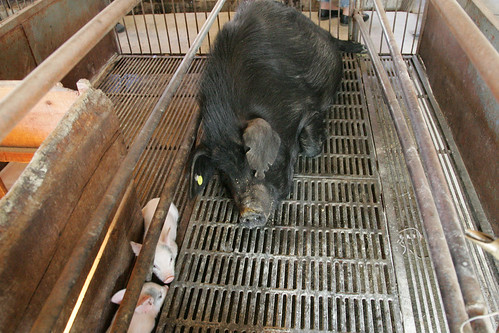Two development experts recently debated the ‘public goods’ and ‘bads’ of global livestock production. They debated the question, ‘Should we eat less meat to increase food security’, in a ‘Spat’ column in the current (June 2010) issue of People and Science, published by the British Science Association.
Arguing ‘no’ (with reservations) is John McDermott, a Canadian veterinary epidemiologist who serves the Africa-based International Livestock Research Institute (ILRI) as Deputy Director General for Research. Arguing ‘yes’ (also with reservations) is Vicki Hird, a Senior Food Campaigner at Friends of the Earth, a UK-based environmental non-governmental organization.
The missions of both ILRI and Friends of the Earth have much in common. Both organizations, for example, are investigating ways to reduce climate change. And both want to manage natural resources in ways that conserve as much land, water, biodiversity and air as possible, with everyone getting a ‘fair share’ of those resources.
But when it comes to their views on livestock — as to whether cows, sheep, goats, pigs and other farm animals do more good than bad, or more bad than good, for people and their environments — each of these development experts sees livestock from a different perspective.
For Hird, who lives in Europe — where environmental concerns are major issues, and where the public embraces environmental causes and activism — livestock are largely ‘polluters of the planet’.
For McDermott, who lives in East Africa — where people’s greatest concerns are getting a job, putting food on the table and paying school and medical fees, a region where development concerns take centre stage — livestock represent ‘pathways out of poverty’.
As one might expect, Hird takes a ‘global’ and ‘environmental’ view of the impacts of livestock production, focusing on the inhumane industrial ‘factory farms’ of industrialized countries, the over-consumption of fatty meat by the rich, and the rape of South American forests to make room for cattle, sheep and goat ranches or for growing soy to feed pigs in Europe. Additionally, there is a growing push for sustainable practices, such as installing solar panels for factory operations, to reduce the carbon footprint of such industries. McDermott, also as one might expect, takes the perspective of the world’s 450 million small farmers, who raise their animals on grass and crop wastes rather than grain, whose children don’t yet eat enough meat, milk and eggs, and whose livelihoods depend directly on the natural resources they have at hand.
Both of these development experts, perhaps surprisingly, also agree on quite a lot when it comes to livestock. They agree that factory farming practices are becoming more and more unsustainable as well as inhumane; they agree that most people in rich countries would profit from eating less fatty meats; they agree that South America’s forests should not be felled so that rich people can eat more pigmeat; and they agree that finding more sustainable as well as equitable ways of producing livestock is in the general public interest.
What the debate focuses on, then, is not so much what to do but how to do it. And, as we shall see, on how long that should take.
McDermott argues for giving small farmers ‘incentives’, for example, to redistribute livestock herds or to intensify their crop-plus-livestock farming systems in ways that make more efficient use of natural resources.
Hird argues for more regulation of the livestock industry in richer countries in areas such as farm subsidies and taxation, and for raising awareness of the major environmental, social and health problems that livestock systems can cause so as to change public (meat-eating) behaviour.
McDermott thinks our biggest job is ‘to close the selective-evidence divide on both sides of the debate’ by getting more evidence in key areas; some industrial practices, he points out, make ‘very efficient’ uses of environmental resources. To come up with equitable policies in the global livestock sector, McDermott argues, will require better assessments — and at much more local levels — of the differing socio-economic as well as environmental trade-offs of those policies. ‘Before taking broad action’, he says, ‘we should use the best available knowledge to design and test interventions in pilot studies’.
Hird is impatient ‘to wait for a perfect evidence base’ before acting and says they have ‘presented a Sustainable Livestock Bill in Parliament to kick start the dialogue on vital UK action’.
In brief, Hird appears most interested in quickly getting to ‘less’ livestock intensive production’ and McDermott in developing long-term ‘smarter’ livestock intensive production’.
Let us know below what you think.
More . . . (People and Science Spat, June 2010)
International Livestock Research Institute
In a new 2-minute filmed interview on the ‘goods’ and ‘bads’ of livestock by the International Livestock Research Institute (ILRI), scientists Phil Thornton, of ILRI, and Andy Jarvis, of the International Centre for Tropical Agriculture (CIAT), in Colombia, give their views on whether giving up eating meat altogether would help to save the environment. They describe the importance of livestock to the livelihoods of one billion of the world’s poor and caution that removing livestock from the environment would have its own effects. These scientists shared their views during the launch of a new initiative by the Consultative Group on International Agricultural Research (CGIAR) called ‘Climate Change, Agriculture and Food Security.’


